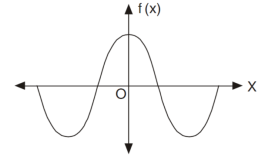Unit – 3
Fourier series
Q1) What is periodic function?
A1)
If the value of the function (y-axis) repeats itself on x-axis, then the function is called periodic function.
Suppose f(x) is a function, then
If f(x) = f(x + t) = f (x + 2t) = …………….
Then t is called the periodic of the function f(x).
Suppose if we take sin x, then it repeats its value after the period of 2 such that, we write this as
such that, we write this as
Sin x = sin (x + 2 sin ( x + 4
sin ( x + 4 ) ………….
) ………….
We can say that sin x is a periodic function with the period of 2 .
.
Q2) Define Fourier series.
A2)
A series of the form,

Is called fourier series , where
 are constants.
are constants.
Any periodic function can be expanded in the form of fourier series.
Q3) How do we find  ?
?
A3)
Multiply each side of eq. (1) by cos nx and integrate from 0 to 2π
We get,



Q4) Find the fourier series of the function f(x) = x where 0 < x < 2 π
A4)
We know that, from fourier series,

First we will find  ,
,

Now, 


And  ,
,


Put these value in Fourier series, we get

Q5) Find the Fourier series for f(x) = x / 2 over the interval 0 < x < 2π
And has period 2π
A5)
First we will find

= 
=
= π
 = π
= π
Similarly,





Which gives,  = 0
= 0
Now,






We get, 
We know that, the Fourier series

Put these values in Fourier series, we get


Q6) Find the Fourier series for f(x) =  in the interval
in the interval  .
.
A6)
Suppose

Then-

And


So that-


And then-




Now put these value in equations (1), we get-

Q7) Define Euler’s formula.
A7)
Euler’s formulae can be defined as-
The Fourier series for the function f(x) in the interval  is given by-
is given by-

Here-



Where-
 are called Euler’s formulae.
are called Euler’s formulae.
Q8) A periodic function of period 4 is defined as below-

Find its Fourier series.
A8)
Here










 as function is even.
as function is even.
The Fourier series is-


Q9) Find the Fourier series for the function-


A9)
The series if of the form,

Then-




= 0 when n is even and  when n is odd.
when n is odd.



Therefore-

Q10) Obtain the complex form of the Fourier series of the function

A10)







Q11) What are the Dirichlet’s conditions for Fourier series?
A11)
Let f(x) be a function defined in C < x < C + 2L such that
1) f(x) is defined and single valued in the given internal also.  exist.
exist.
2) f(x) may have finite number of finite discontinuities in the interval.
3) f(x) may have finite number of maxima or minima in the given interval.
Q12) Define even function.
A12)
If f(-x) = f(x) then the function is known as even function.
The graph of the function f(x) looks like-

Area under the curve from -π to π will always be double the area from 0 to π

Q13) Find the fourier expression of f(x) = x³ for –π< x <π.
A13)
Here, we can see that f(x) Is an odd function
So that,
 and
and

We will use here ,



We get the value of f(x),

Q14) Expand the function f (x) =  in Fourier series in the interval (−π, π )
in Fourier series in the interval (−π, π )
A14)
f (x) is even since f (−x) = f (x). The Fourier series reduces to Fourier cosine series given by

Where

Now





Q15) Find the Fourier sine series for the function-

Where ‘a’ is a constant.
A15)
Here we know-


We know that-




And

